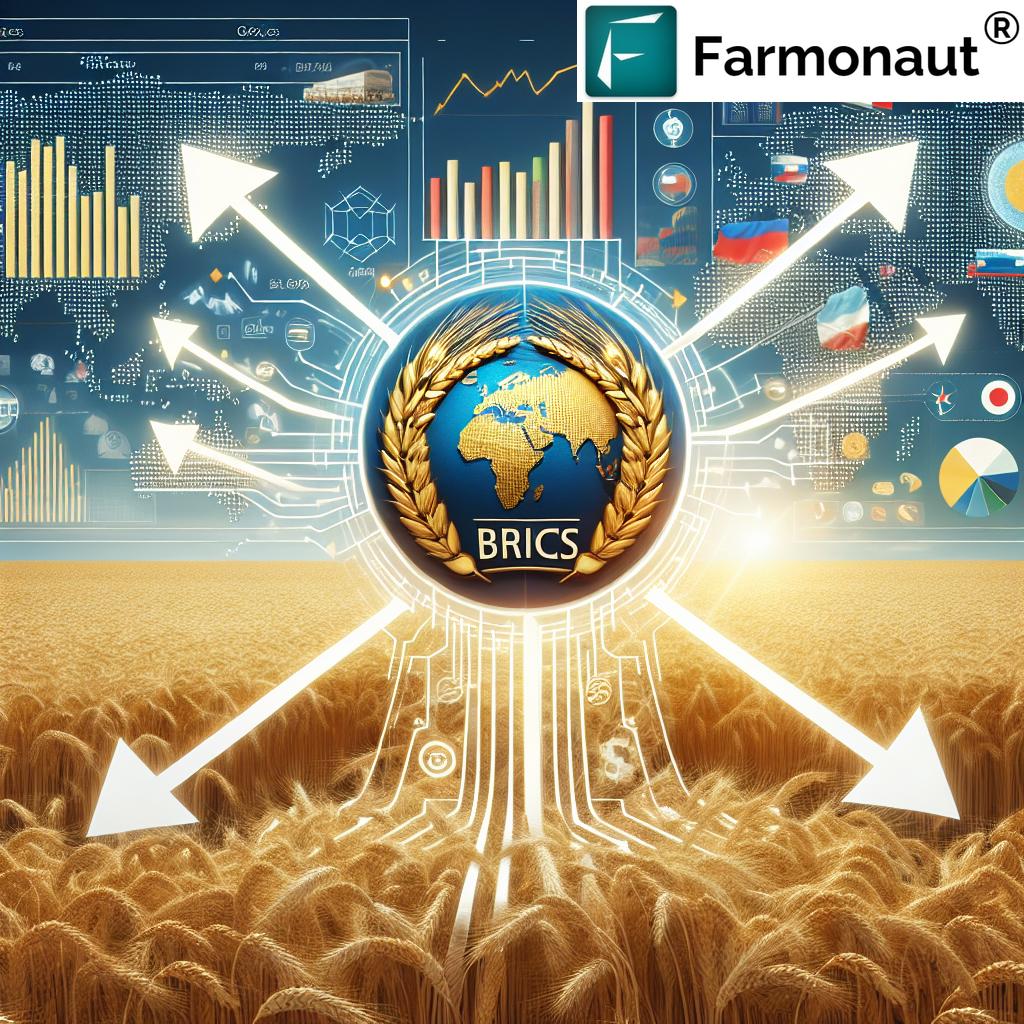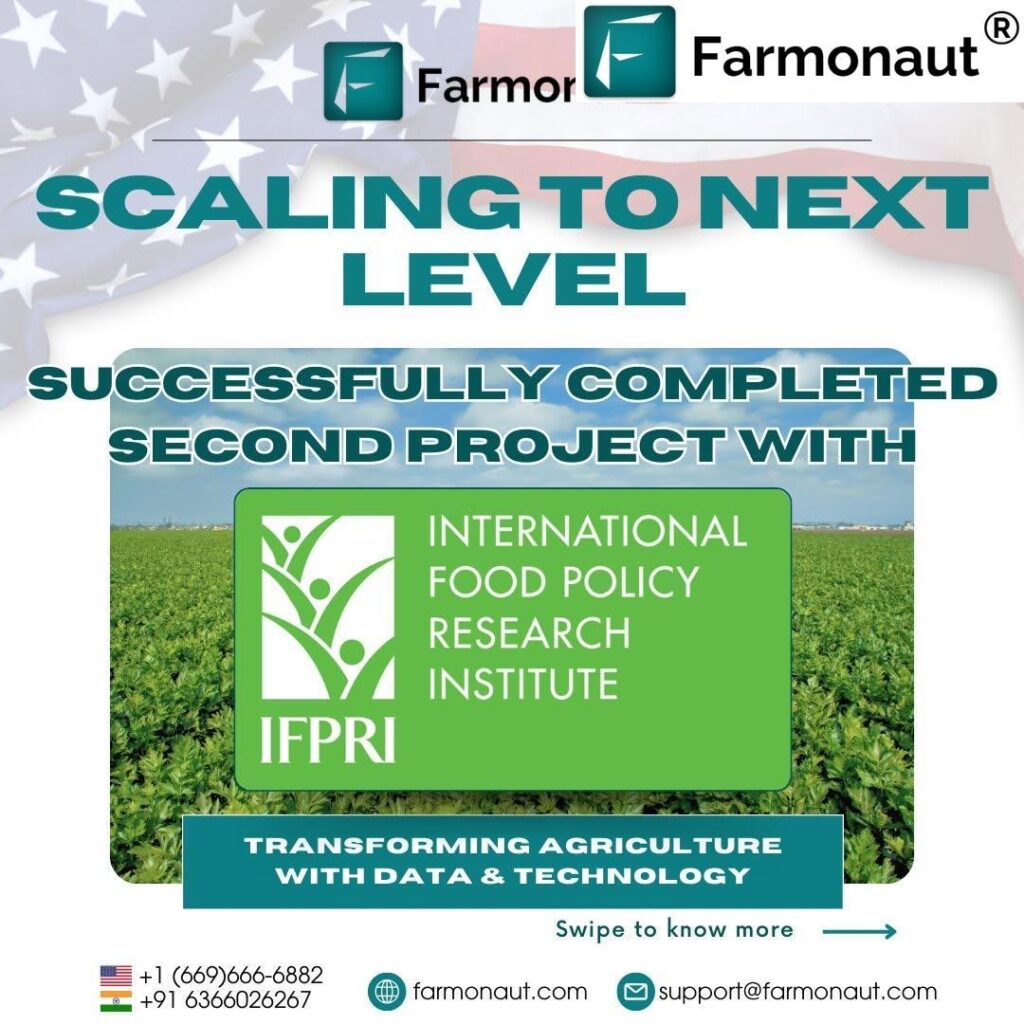BRICS Grain Exchange: Russia’s Bold Move to Revolutionize Global Wheat Prices and Dominate Agricultural Markets

In a groundbreaking development that could reshape the global grain prices landscape, Russia is spearheading an initiative to establish a BRICS grain exchange. This bold move aims to revolutionize the agricultural commodities market and solidify the BRICS bloc’s position as the premier influencer of worldwide grain pricing mechanisms.
The Birth of a New Agricultural Market Revolution
The recent three-day BRICS summit in Kazan, Russia, concluded with a declaration that not only addressed the contentious issue of “illegal sanctions” against Russia and Iran but also unveiled a plan that could trigger an agricultural market revolution. Buried within the document was a proposal to establish a grain exchange within the BRICS economic bloc.
Russian President Vladimir Putin, the mastermind behind this initiative, emphasized the collective strength of BRICS nations in agricultural production. He highlighted that BRICS countries are among the world’s largest producers of grains, legumes, and oilseeds, positioning them perfectly to influence global grain price control.
Challenging the Status Quo: BRICS vs. Chicago Board of Trade
The proposed BRICS grain exchange aims to establish a commodity pricing scheme that would rival the Chicago Board of Trade, which has long been the international benchmark for grain futures. This move signifies a significant shift in international wheat trade dynamics and could potentially alter the balance of power in the agricultural commodities market.
- Russia’s wheat export dominance: Leading exporter in 2022 and 2023 with approximately 49 million tonnes
- Brazil’s agricultural prowess: Top exporter of soybeans and corn by volume
- BRICS’ collective agricultural influence: Accounting for a significant portion of global grain production
Explore agricultural insights with Farmonaut’s advanced satellite technology:
Russia’s Strategy: Boosting Price Formation Power
Moscow’s push for a new pricing mechanism stems from frustration over the record lows at which Russian wheat is trading on the international market. In early October, Russian agricultural authorities recommended that domestic exporters refrain from selling wheat for less than $250 per tonne, signaling a desire to exert greater control over grain pricing mechanisms.
Hideki Hattori, chief grain analyst at Japanese milling company Nippn, explains, “The creation of a grain exchange, which is an extension of Russia’s most recent moves, is intended to boost price formation power. Strong resistance to the price leadership by Western nations is apparent.”

The OPEC Model: Inspirations and Implications
Russia’s strategy draws inspiration from OPEC, the Organization of Petroleum Exporting Countries. Formed in 1960 to protect the interests of oil-producing nations from multinational corporations, OPEC has grown from five founding members to 12 today. Its decisions to increase or decrease output significantly influence international crude prices.
The BRICS grain exchange could potentially become an “OPEC for wheat,” with the power to influence global grain prices through coordinated actions of its member states.
BRICS Expansion and Its Impact on Agriculture
The recent expansion of BRICS to include Egypt, Iran, the United Arab Emirates, and Ethiopia has further strengthened the bloc’s agricultural clout. These nine countries now account for 45% of the world’s population, presenting a formidable force in the international wheat trade.
The expanded BRICS bloc aims to leverage its combined BRICS commodity pricing power to raise overall grain prices. For instance, if Russia were to refuse grain exports unless transactions go through the proposed exchange, it could lead to a significant increase in international prices.
Access real-time agricultural data with Farmonaut’s API:
Challenges and Opportunities in the BRICS Grain Exchange
While the BRICS grain exchange presents significant opportunities, it also faces challenges:
- Diverse interests within BRICS: Unlike OPEC, BRICS includes both grain exporters and importers, potentially leading to conflicting priorities.
- Market adoption: The success of the exchange depends on its acceptance by global traders and its ability to compete with established exchanges.
- Geopolitical tensions: The initiative could face resistance from Western countries, potentially leading to further trade frictions.
Tsutomu Kosuge, head of commodity research company Marketedge, notes, “At this stage, it is difficult to see the benefits for countries other than Russia, so many countries are taking a wait-and-see stance. However, if trade friction between the U.S. and China worsens under the next U.S. president, China could fall in line.”
Food Security Geopolitics: BRICS’ Growing Influence
The establishment of a BRICS grain exchange has significant implications for food security geopolitics. As the bloc gains more control over grain pricing mechanisms, it could potentially use this leverage to influence global food policies and trade relations.
Russia’s strategy of providing surplus wheat to poor countries free of charge further demonstrates the bloc’s intention to use agricultural resources as a geopolitical tool. This approach could reshape international wheat trade shifts and alter the dynamics of global food security.
Stay updated on agricultural trends with Farmonaut’s mobile apps:
The Future of Global Grain Markets
As the BRICS bloc moves forward with its plan to establish a grain exchange, the future of global grain markets hangs in the balance. The success of this initiative could lead to:
- A shift in commodity price formation dynamics
- Increased competition among global agricultural exchanges
- Greater influence of emerging economies on global grain prices
- Potential changes in international trade policies and agreements
The BRICS grain exchange impact could be far-reaching, potentially altering the landscape of global agriculture and international trade for years to come.
Conclusion: A New Era in Agricultural Commodities
The proposed BRICS grain exchange represents a bold move by Russia and its BRICS partners to revolutionize global grain prices and dominate agricultural markets. While challenges remain, the potential for this initiative to reshape the agricultural commodities market and influence food security geopolitics cannot be underestimated.
As the world watches this development unfold, it’s clear that the international wheat trade is on the cusp of significant change. The success of the BRICS grain exchange could herald a new era in agricultural commodities, with far-reaching implications for farmers, traders, and consumers worldwide.
Stay tuned to Farmonaut for the latest updates on this developing story and its impact on global agriculture.
















